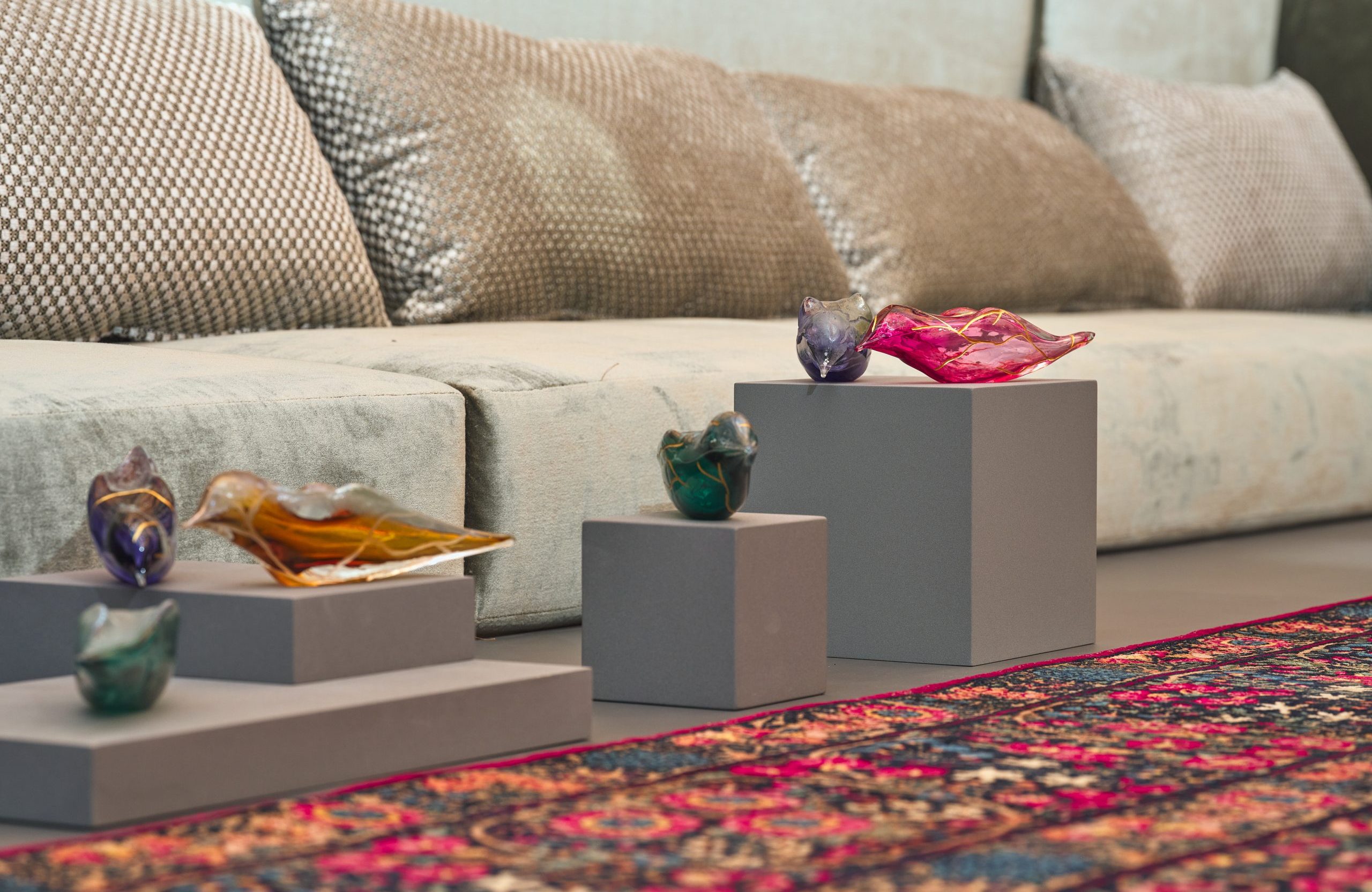More than 50,000 families in Syria have been displaced due to the earthquakes.
The power of art has long transcended time and space and acted as a visual representation of feelings that words often fail to convey.
Earlier this year, the world was left in an utter shock when powerful 7.8 magnitude earthquakes struck Turkiye and Syria, leading to a harrowing death toll of more than 55,000.
The natural disaster left the affected populations with an open wound, and months on, the devastation is still visible in the damaged walls of buildings, wreckage and the faces of thousands of displaced peoples forced to deal with the aftermath.
For artist Feleksan Onar, art was a way of offering a mere glimpse into the forced displacements. Through ‘Shattered’, her latest installation at the Muslim of Islamic Art (MIA) in Qatar, she was able to depict fragility and strength during such trying times.
“Shattered is an intervention into the interiors of the Damascus Room of MIA, which itself went through many years of reassembly and restoration and has over time provided a haven for the items that have historically inhabited the space, finding temporary refuge,” Shaika Nasser Al-Nassr, MIA Deputy Director of Curatorial Affairs, previously said.
The exhibition attempts to convey the multiple characteristics linked to displacement by showcasing birds made of blown glass with golden cracks, which are placed in the middle of the Damascus Room at MIA.
“The glass birds echo the pain of human displacement but also show its resilience to emerge victorious, contrary to its surrounding circumstances and environment,” Onar previously told Qatar Museums.
The tragic earthquake leveled thousands of structures in the affected areas, many of which had already been hosting large populations of displaced people, especially Syrians who fled the ongoing violence in their homeland.
More than 50,000 families in Syria have been displaced due to the earthquakes, per figures shared by the United Nations in April.
Onar said she tried to present both the pain and strength in such disasters through the golden lines, using the Japanese Kintsugi technique. The traditional method sticks together broken fragments of glass with gold, resembling resilience by ensuring the cracks are still visible.
In creating the birds, the Turkiye-born artist tried associating the cracks with the damage inflicted by the quake while maintaining the beauty of humanity’s strength when emerging from such tragedies.
“Birds serve as symbols of both fragility and strength and often undergo a similar process of repair and restoration following the effects of natural disasters,” Onar explained.
Onar’s latest exhibition builds on the success of her previous work, “Perched”, which also used glass birds as a way of reflecting the global migration crisis. The Turkiye-based artist’s work can be viewed at the Damascus Room at MIA until 7 May 2024.







